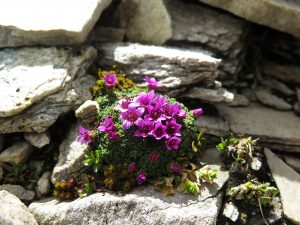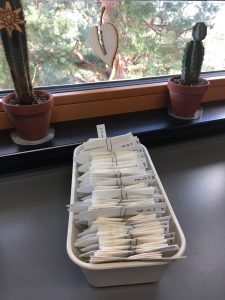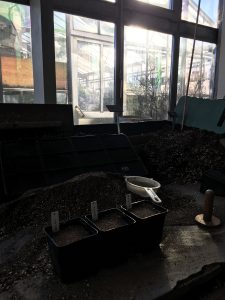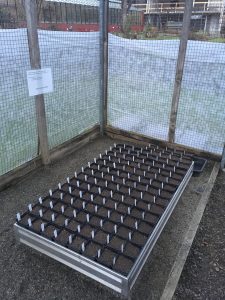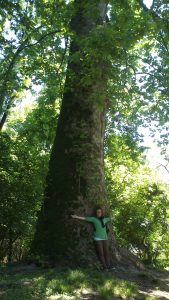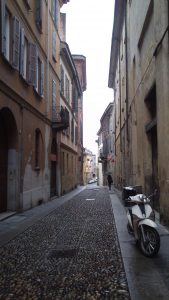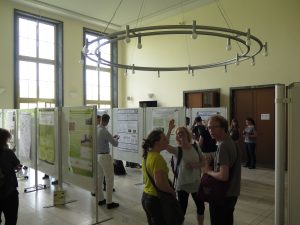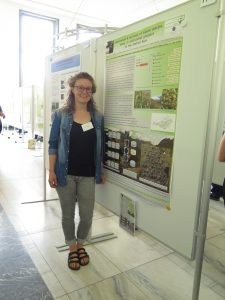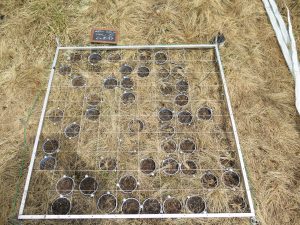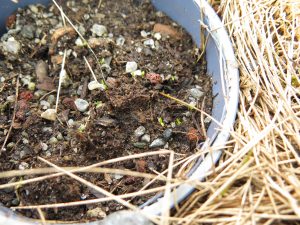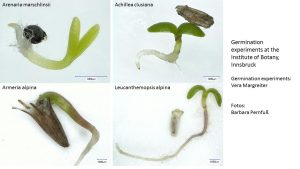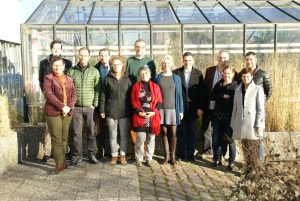Le Pôle interdisciplinaire d’études françaises de l’Université d’Innsbruck together with the French Embassy in Vienna, are expanding and intensifying the relations of the University of Innsbruck to France. To get insights into the work of the already existing French-Austrian cooperations, a group of representatives visited diverse Departments of Innsbruck University.
As the “Alpine Seed Conservation and Research Network” includes such a cooperation, the group of representatives also stopped by at the Department of Botany in Innsbruck, where among others Konrad Pagitz & Vera Margreiter presented the Network and their work.
Univ.-Prof. Mag. Dr. Eva Lavric, Director of Le Pôle interdisciplinaire d’études françaises de l’Université d’Innsbruck, MMag.a Ramona Kaier and Ludovic Milot MA, coordinators of Le Pôle, accompanied the Director of the Cultural Department of the French Embassy in Vienna, Dr. Jacques-Pierre Gougeon, on his tour through Innsbruck.
See some pictures of the warm and nice come-together.
Univ.-Prof. Mag. Dr. Ilse Kranner, head of the Department of Botany, welcomed the visitors with coffee in her office, where the ice broke fast and laughs were allowed.
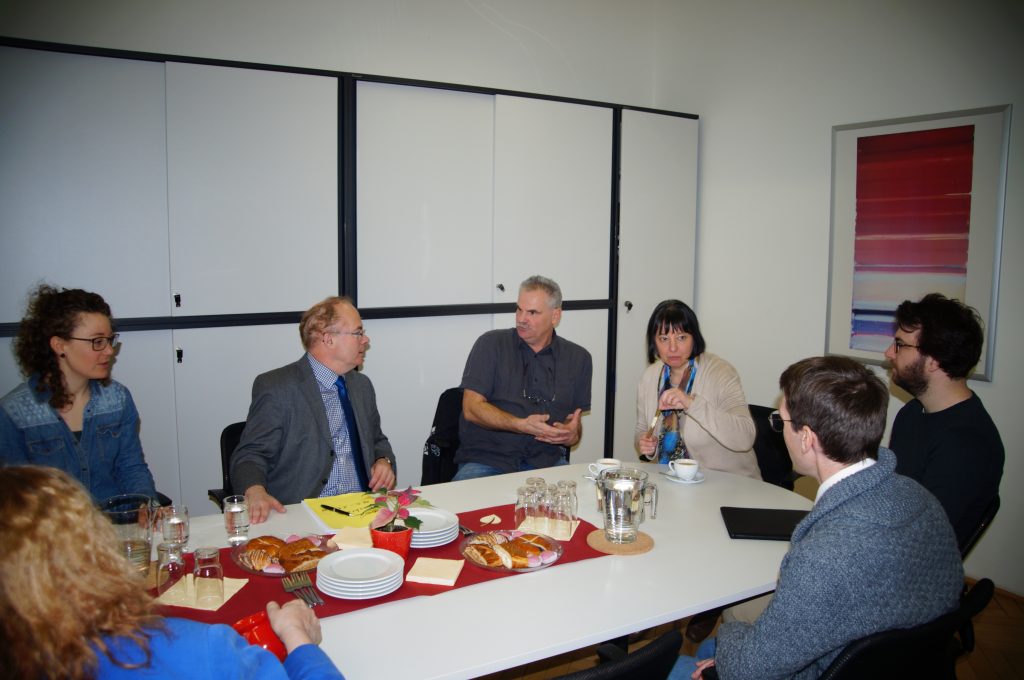 Left to right: Vera Margreiter, Jacques-Pierre Gougeon, Konrad Pagitz, Ilse Kranner, Benjamin Dietre, Ludovic Milot. Eva Lavric in the front. Not in the picture: Ramona Kaier and Erwann Arc (Pic: Kaier)
Left to right: Vera Margreiter, Jacques-Pierre Gougeon, Konrad Pagitz, Ilse Kranner, Benjamin Dietre, Ludovic Milot. Eva Lavric in the front. Not in the picture: Ramona Kaier and Erwann Arc (Pic: Kaier)
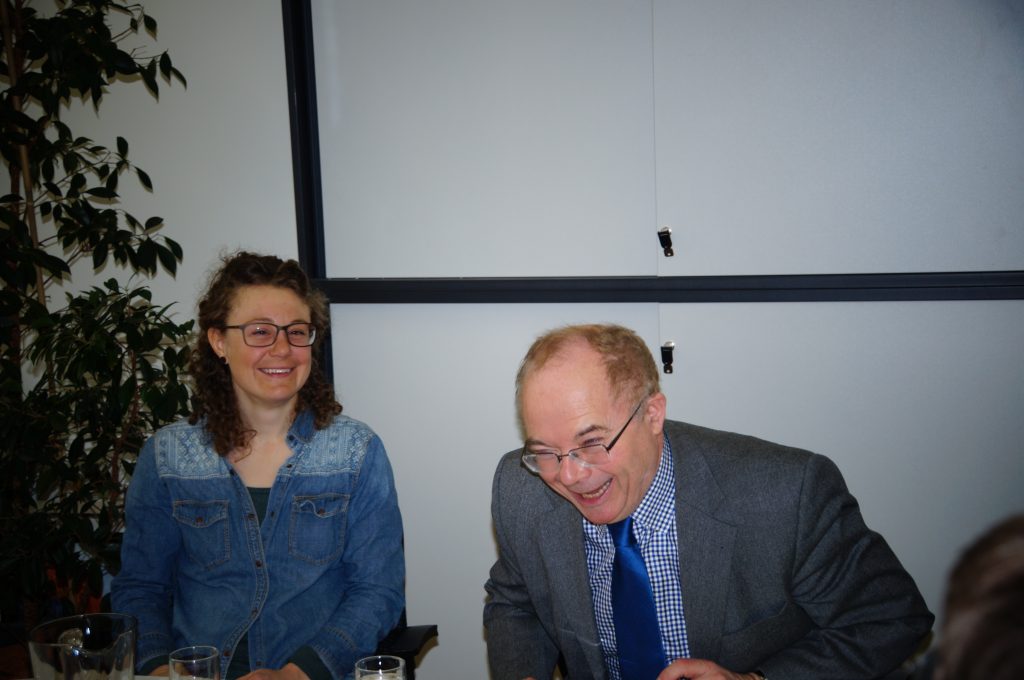 Vera Margreiter & Jacques-Pierre Gougeon (Pic: Kaier)
Vera Margreiter & Jacques-Pierre Gougeon (Pic: Kaier)
Explanation of the Network and the research on seed germination in the field area in Obergurgl, Ötztal, Tyrol, Austria.
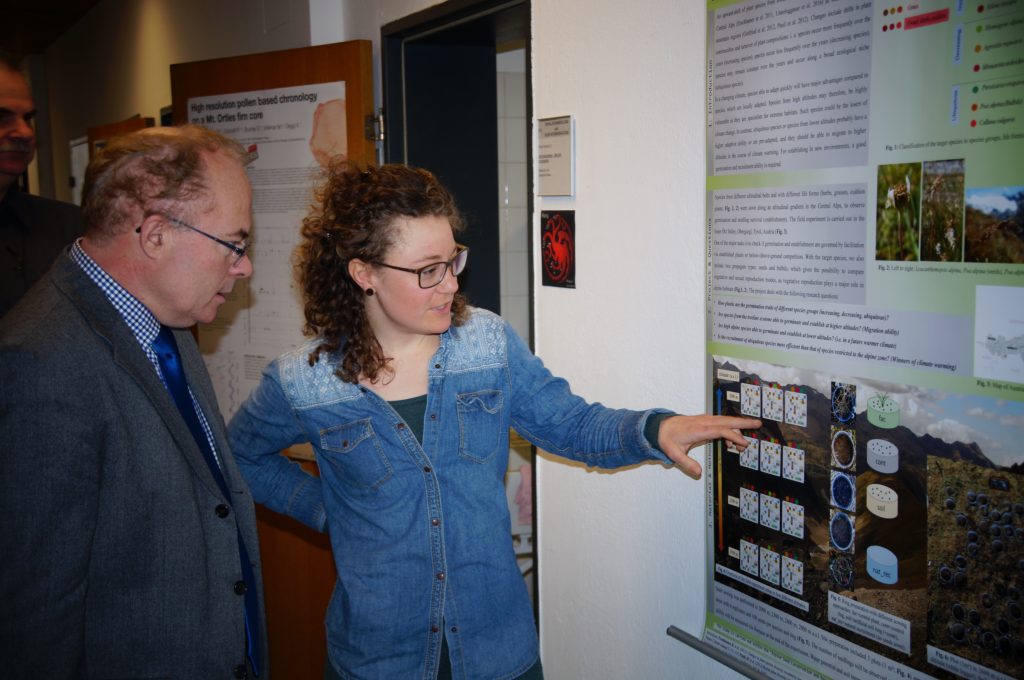
(Pic: Kaier)
Visitation of the Laboratory facilities of the working group “Population Biology and Vegetation Ecology” with insights into the germination tests. Some seedlings are very tiny and need a closer look to identify!
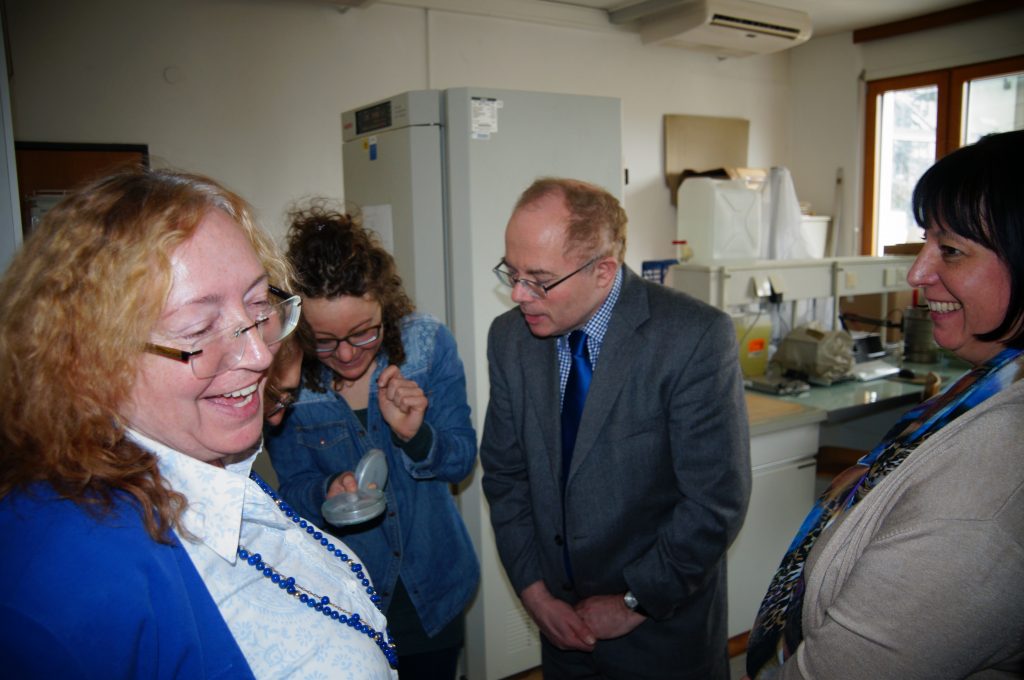 Eva Lavric, Vera Margreiter, Jacques-Pierre Gougeon, Ilse Kranner (Pic: Kaier)
Eva Lavric, Vera Margreiter, Jacques-Pierre Gougeon, Ilse Kranner (Pic: Kaier)
It was a pleasure to welcome the representatives of Le Pôle interdisciplinaire d’études françaises de l’Université d’Innsbruck as well as Dr. Jacques-Pierre Gougeon from the French Embassy!
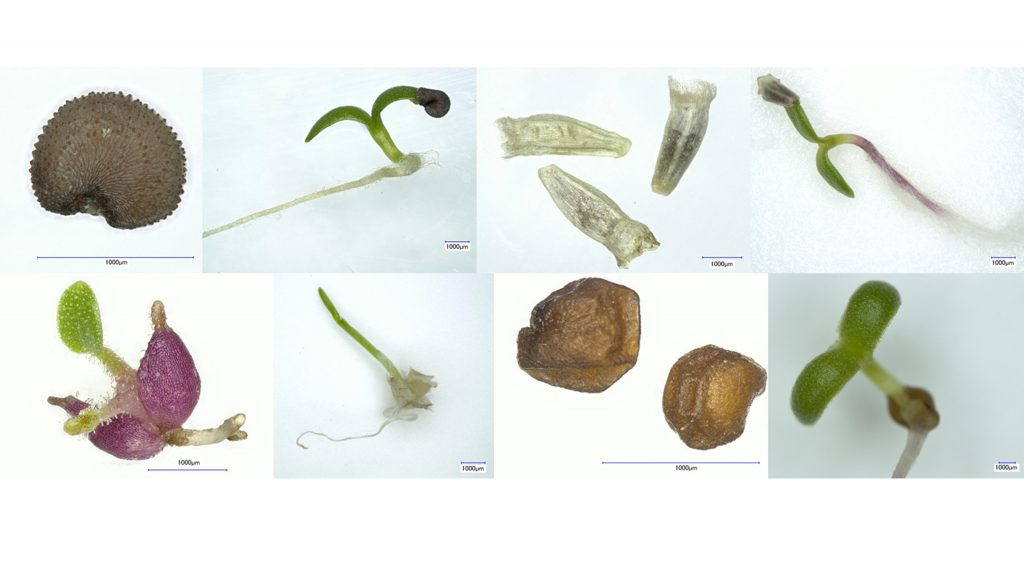
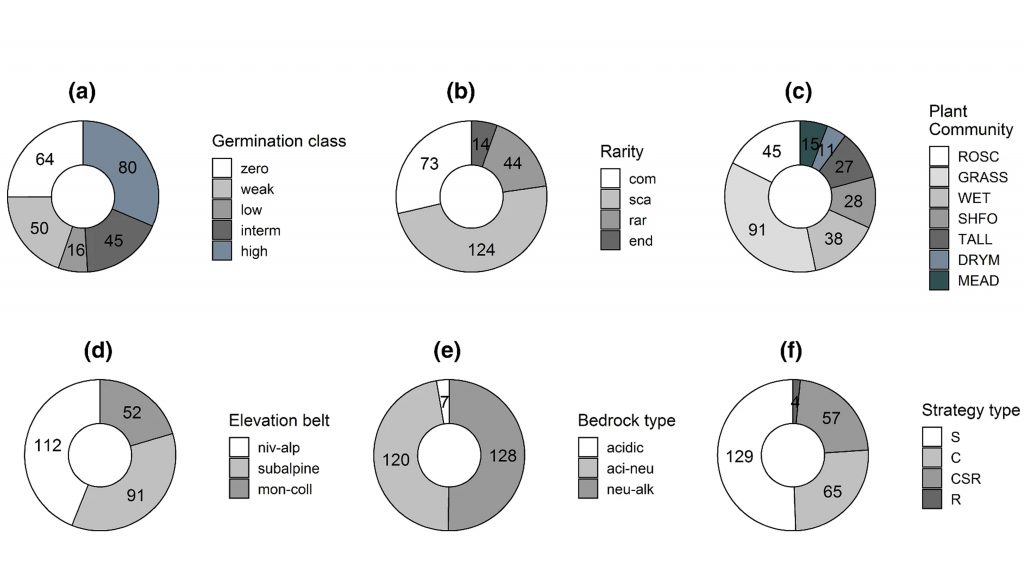
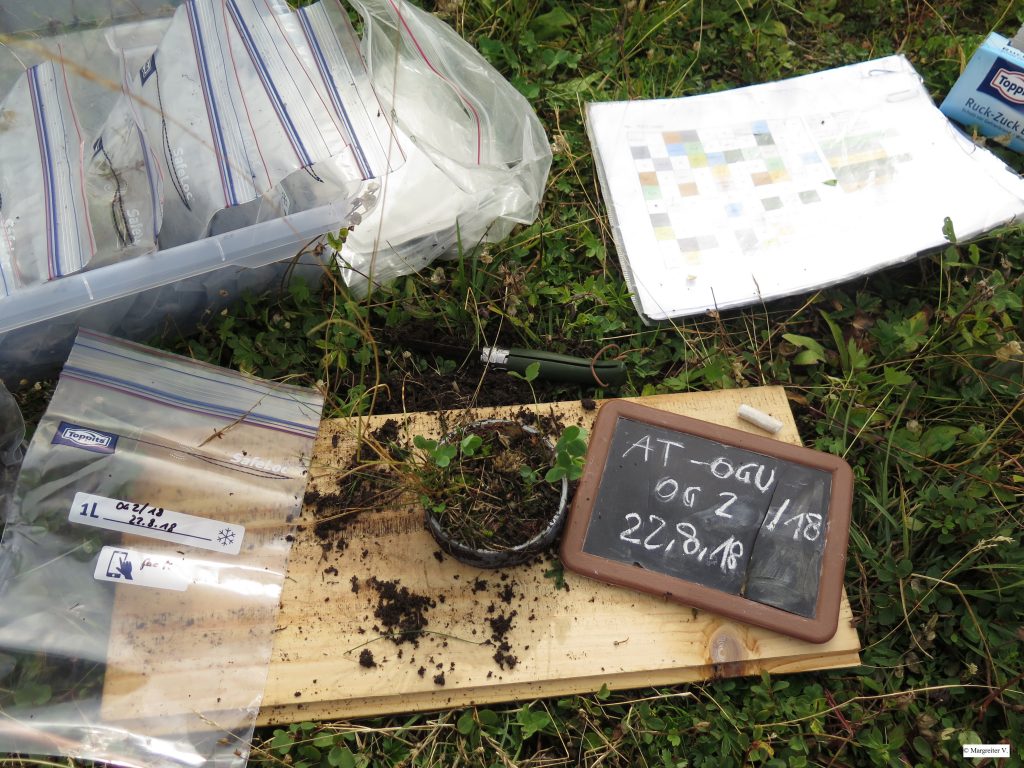
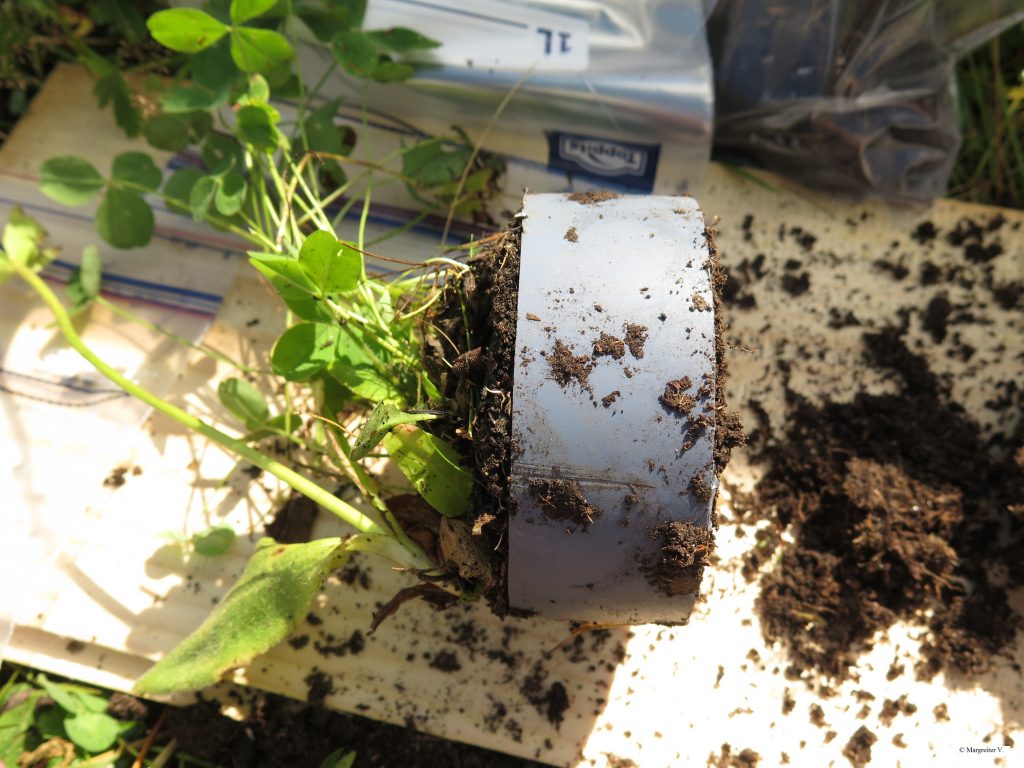
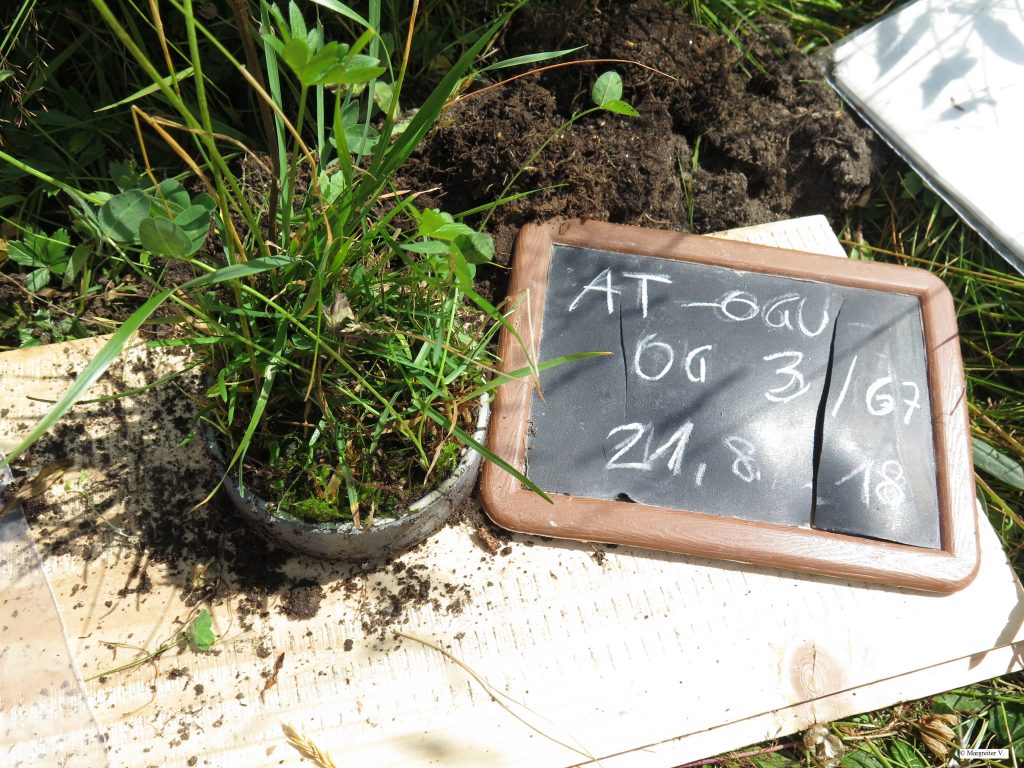
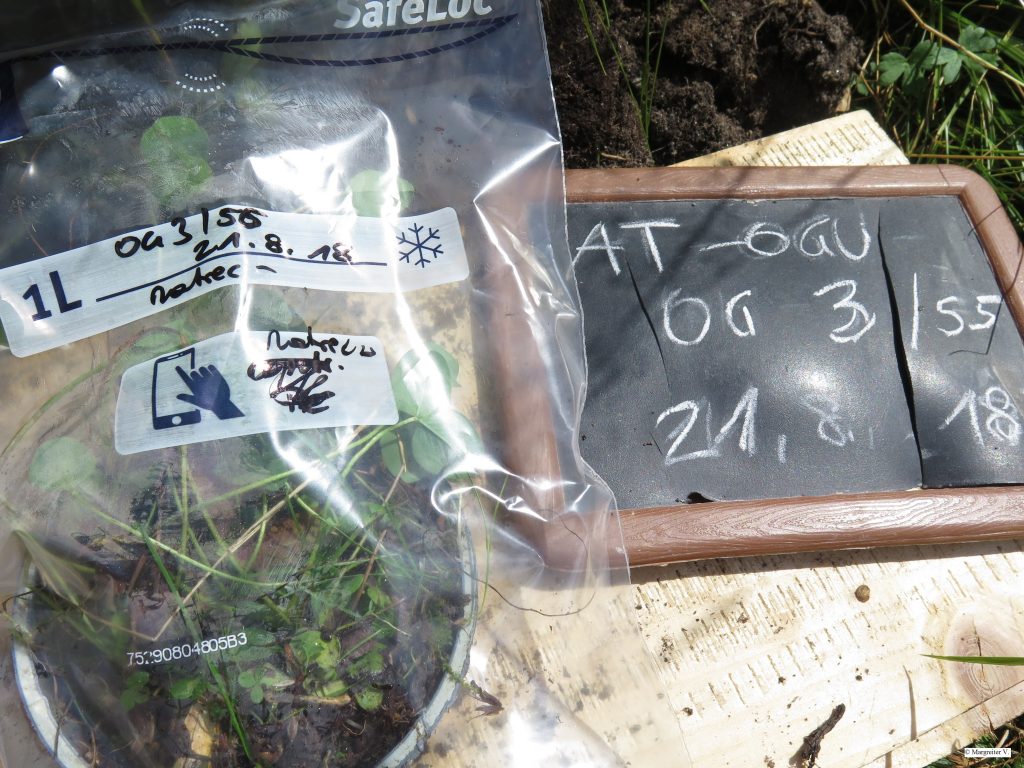
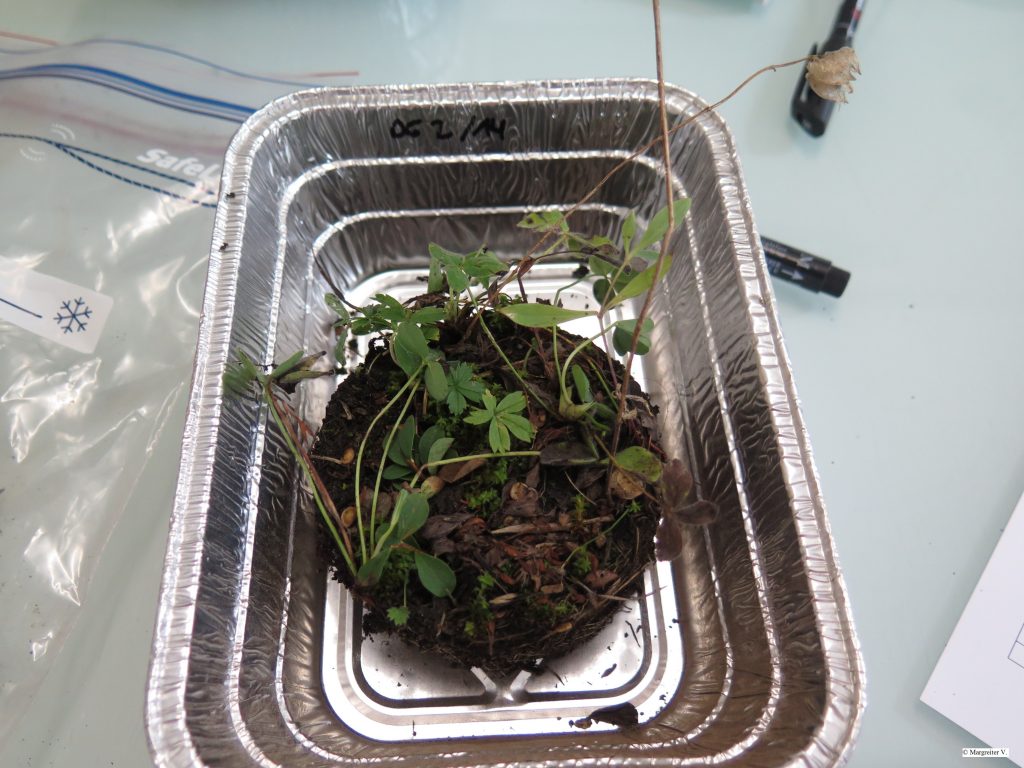
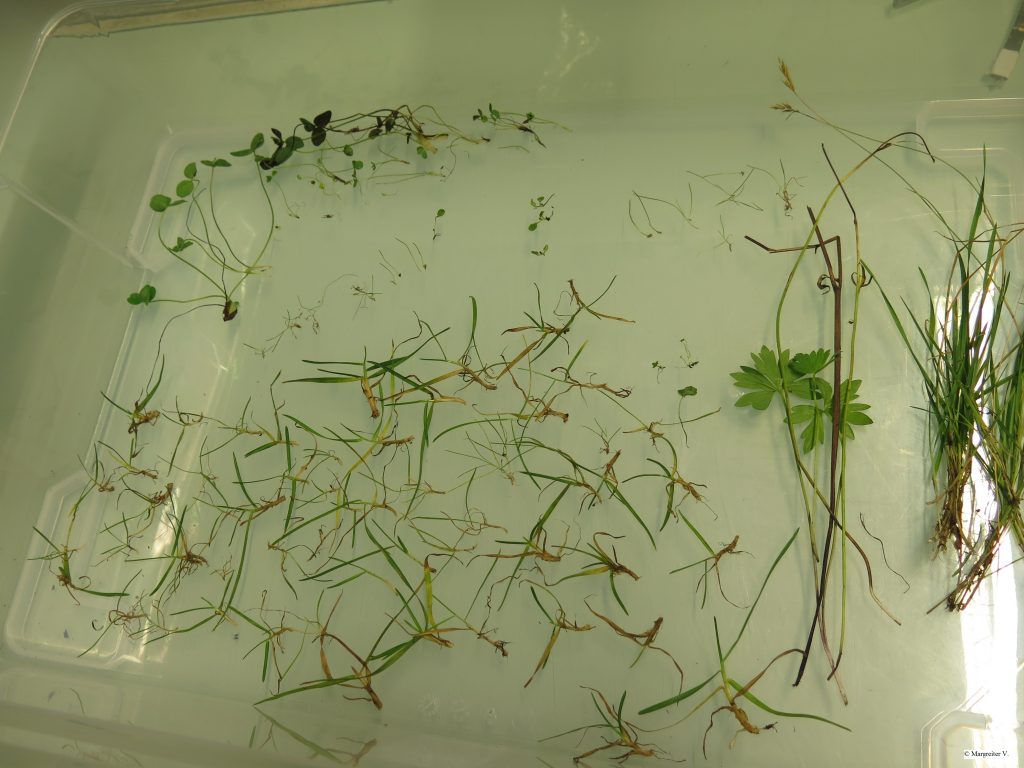
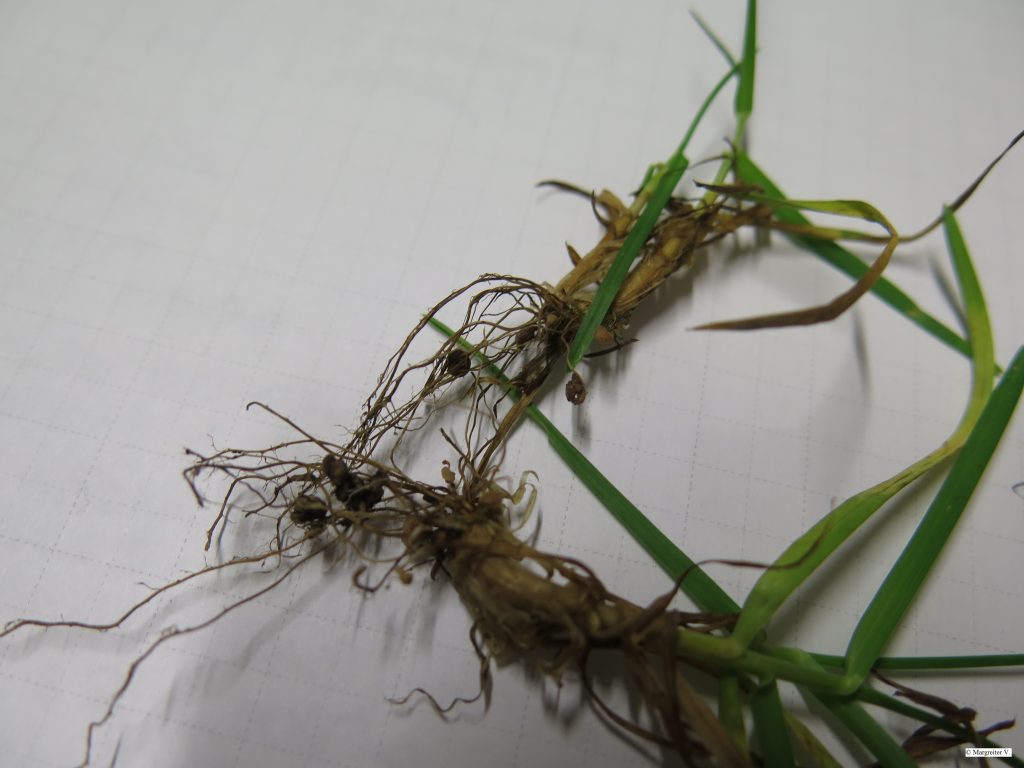
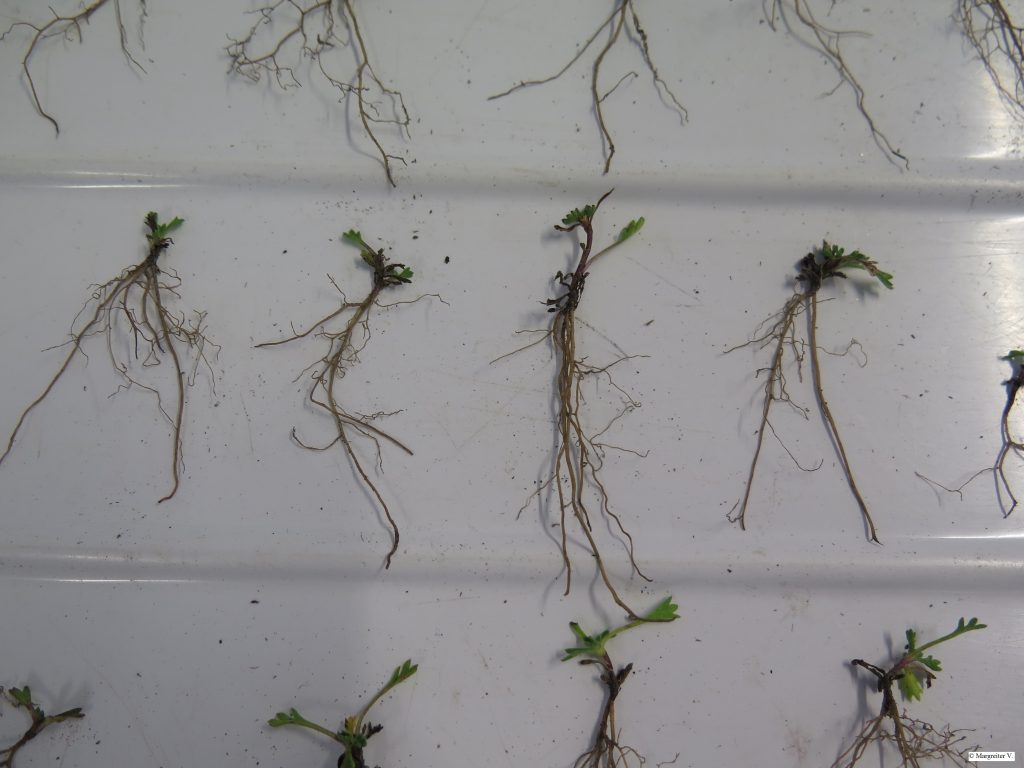
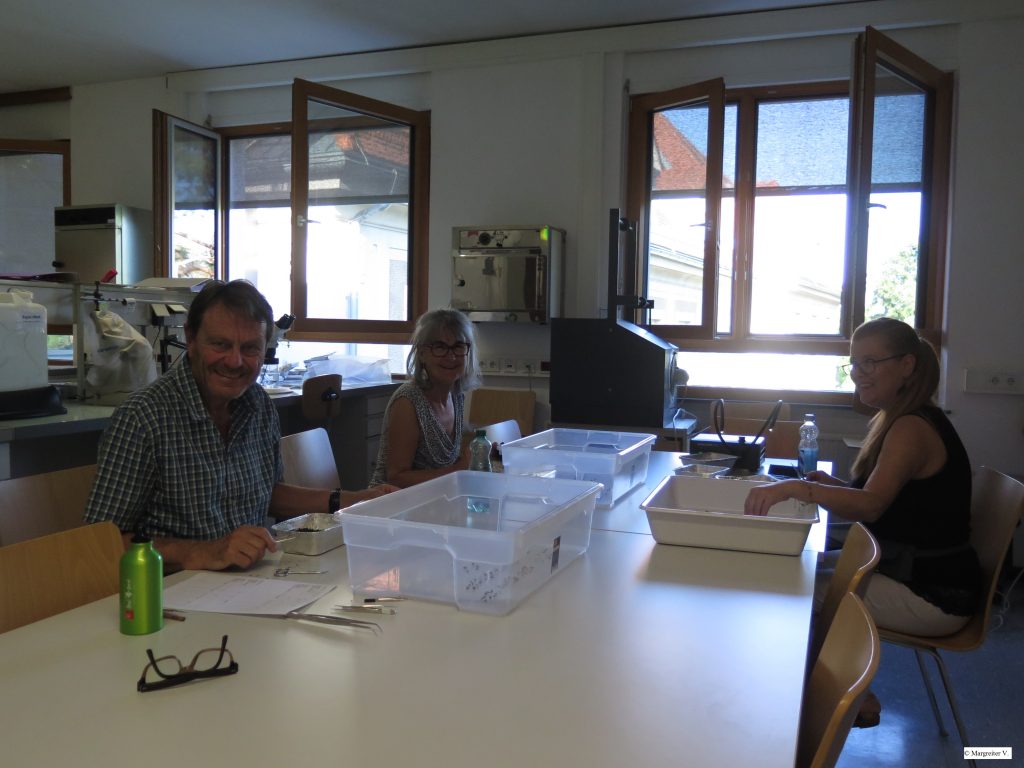
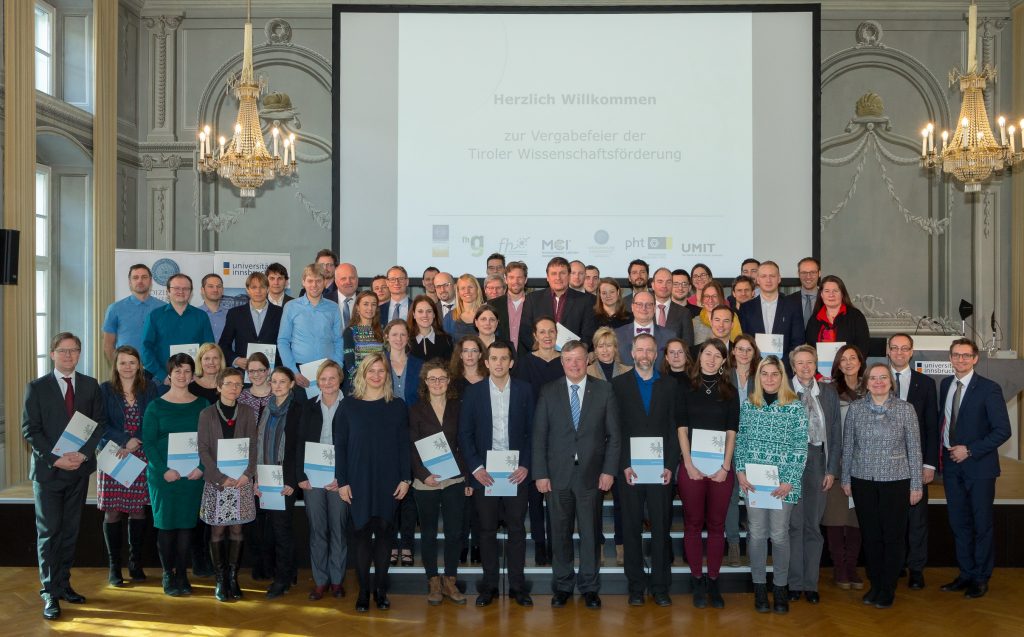
 Left to right: Vera Margreiter, Jacques-Pierre Gougeon, Konrad Pagitz, Ilse Kranner, Benjamin Dietre, Ludovic Milot. Eva Lavric in the front. Not in the picture: Ramona Kaier and Erwann Arc (Pic: Kaier)
Left to right: Vera Margreiter, Jacques-Pierre Gougeon, Konrad Pagitz, Ilse Kranner, Benjamin Dietre, Ludovic Milot. Eva Lavric in the front. Not in the picture: Ramona Kaier and Erwann Arc (Pic: Kaier) Vera Margreiter & Jacques-Pierre Gougeon (Pic: Kaier)
Vera Margreiter & Jacques-Pierre Gougeon (Pic: Kaier)
 Eva Lavric, Vera Margreiter, Jacques-Pierre Gougeon, Ilse Kranner (Pic: Kaier)
Eva Lavric, Vera Margreiter, Jacques-Pierre Gougeon, Ilse Kranner (Pic: Kaier)